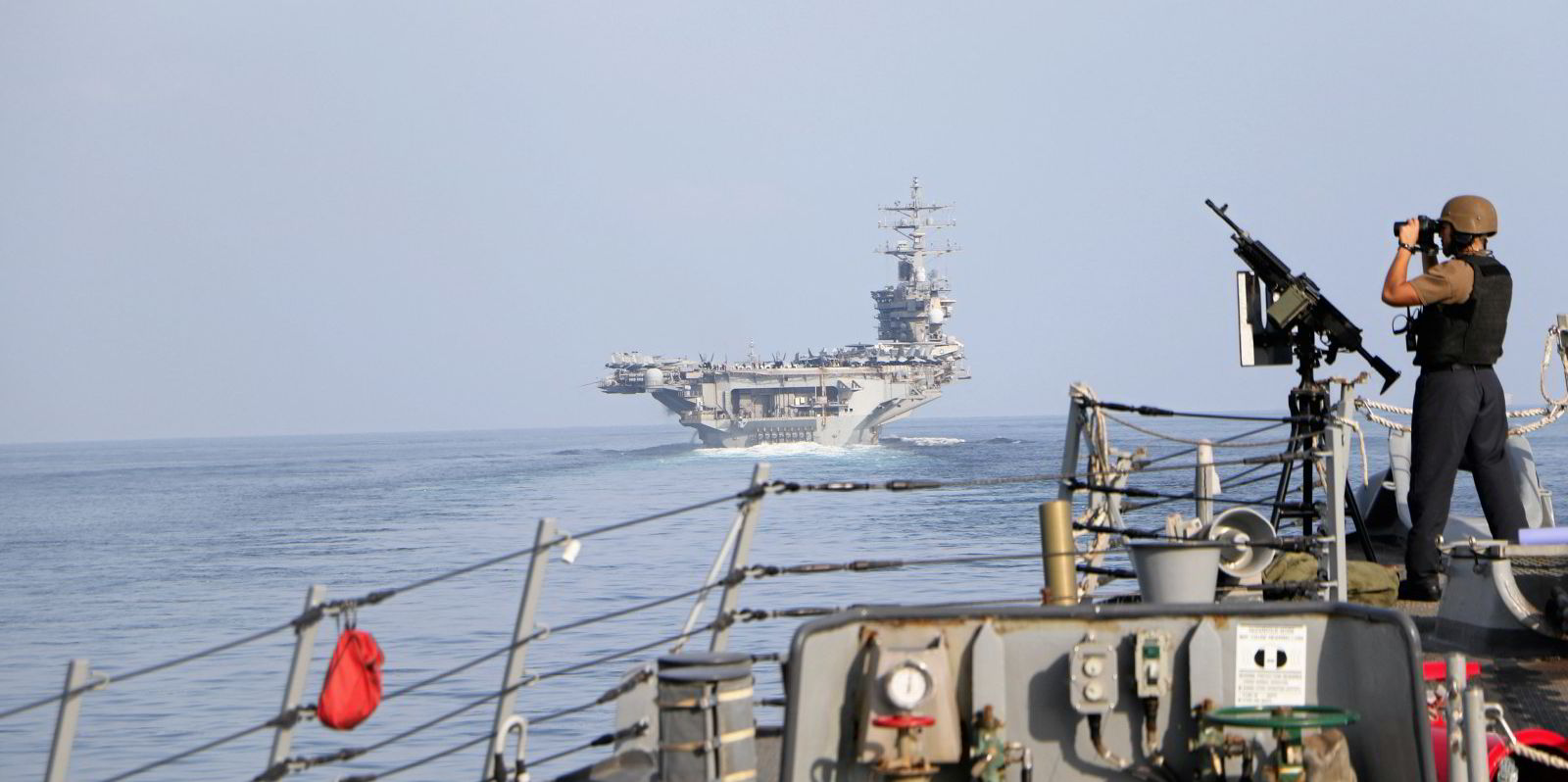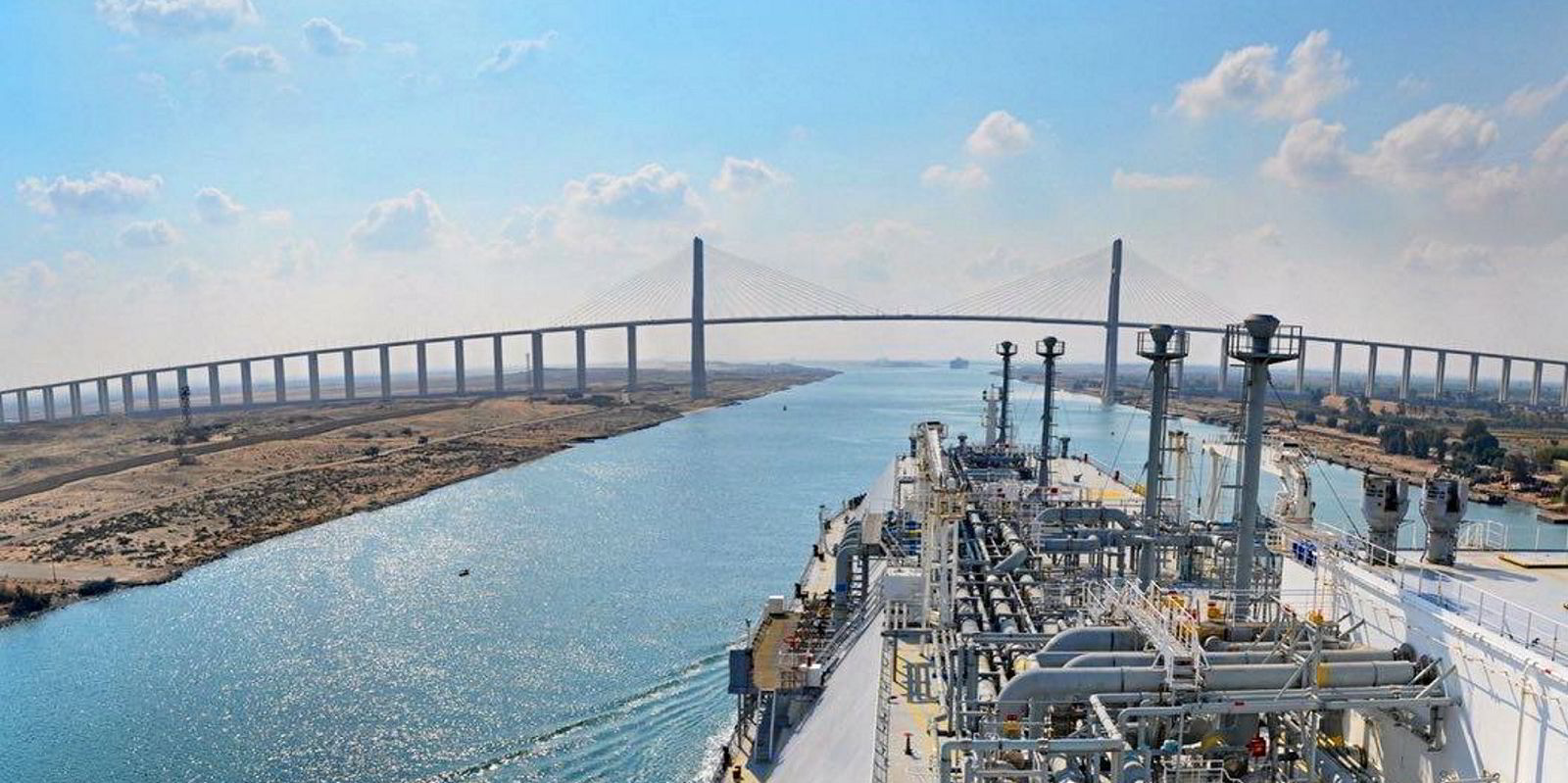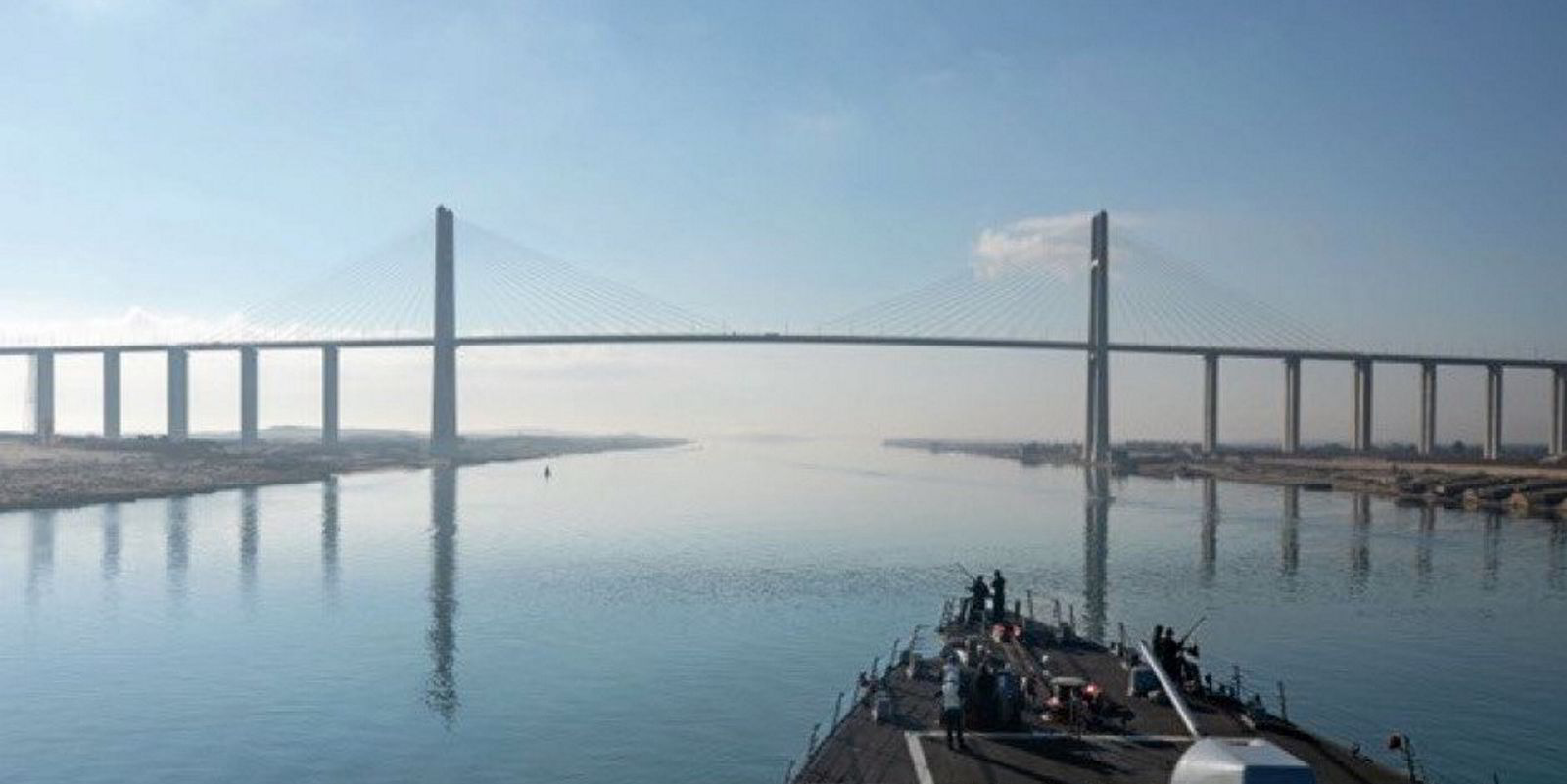AP Moller-Maersk, the giant container line that has resumed shipping operations through the Red Sea, saw one of its vessels repeatedly attacked by the Houthis over the weekend — first by a missile and then by armed assailants on small boats that attempted to board it.
As part of the ensuing skirmish, US forces fired on three Houthi boats and killed their crew.
The escalating Houthi attacks come one day after the government of Denmark, where Maersk is based, announced plans to send a frigate to the area, as part of a US-led naval operation to protect commercial vessels.
The fresh incidents, in which US Navy ships and helicopters came under attack themselves, highlight the continued risks involved in Red Sea shipping and are evidence of continued Houthi defiance against Operation Prosperity Guardian, which is backed by about 20 nations.
According to a statement by US Central Command (Centcom), the 15,300-teu Maersk Hangzhou (built 2018) came under attack at about 1730 GMT on 30 December, somewhere in the southern Red Sea.
The vessel “reported that they were struck by a missile” and “requested assistance”.
Two US ships rushed to provide help — the USS Gravely and the USS Laboon. While doing so, “the USS Gravely shot down two anti-ship ballistic missiles fired from Houthi-controlled areas in Yemen toward the ships,” Centcom said.
According to Centcom, the Maersk Hangzhou reported being seaworthy and no injuries onboard.
The incident, however, may have affected vessel’s speed.
It is likely that the Maersk Hangzhou is the unidentified vessel referred to in a separate incident alert early on Sunday by the United Kingdom Trade Organisation (UKMTO).
The UKMTO reported an incident in the Red Sea, 55 nautical miles (102 kilometres) southwest of the Yemeni port of Al Hudaydah.
According to the UKMTO, the vessel’s master reported hearing a “loud bang accompanied by a flash on the port bow” and “seeing several more explosions in the vicinity of Al Hudaydah”.
No damage was reported to the vessel, which was said to have cleared the area “at full speed to [the] next port of call”.
Second attack at dawn
However, the Houthis resumed attacking the Maersk Hangzhou a few hours later, at about 0630 local Sanaa time on 31 December.
Assailants on four small boats that originated from Houthi-controlled areas of Yemen got within 20 metres of the Maersk Hangzhou and tried to board it, firing at the vessel with “crew-served and small arms weapons”, Centcom said in a separate post on X.
Armed guards on board the Maersk Hangzhou returned fire.
Following a second distress call by the Maersk ship, US Navy helicopters that rushed to assist came under Houthi fire.
“The US Navy helicopters returned fire in self-defence, sinking three of the four small boats and killing the crews,” Centcom said. The fourth Houthi boat fled the area and there was no damage to US personnel or equipment.
Ten Houthi fighters lost their lives, the group confirmed later on Sunday, vowing to avenge them.
“The US will bear the consequences of this crime,” Houthi spokesman and brigadier general Yahya Saree said in a televised speech.
The Houthis’ speed boat attack against the Maersk Hangzhou was also corroborated by separate alerts issued on Sunday by the UKMTO and maritime security firm Diaplous, which said the incident happened about five miles further north of where the Maersk ship was hit by a missile late on Saturday.
This suggests that the first attack may have affected the vessel’s speed.
“Shots were exchanged — all [Maersk Hangzhou] crew have been accounted for with no casualties,” the UKMTO said.
The Maersk Hangzhou seems to have its AIS switched off currently. The last available signals show it in the Gulf of Aden heading westward at a speed of 20.6 knots. The trackers suggest it was heading, laden, from Singapore to Egypt.

According to Centcom, the Maersk Hangzhou incident is the 23rd vessel attacked by the Houthis since 19 November, when the Yemeni rebel group announced targeting ships to pressure Israel and its western backers to ease attacks waged against the Palestinian Hamas group in Gaza.
The Houthis officially maintain they are targeting only Israeli-owned or Israeli-bound vessels. However, the list of their targets suggests that their strikes are becoming increasingly arbitrary, or that they are motivated by an unstated agenda.
For instance, the strike against the Maersk Hangzhou comes one day after Denmark said it would send a frigate to support Operation Prosperity Guardian.
“Houthi attacks on civilian shipping threaten our commercial shipping, maritime security, and global trade at large,” Denmark’s foreign minister Lars Lokke Rasmussen said when announcing the plans on Friday.
Houthi leader Abdul-Malik al-Houthi has warned countries against joining the US-led operation.
“Don’t get involved … don’t risk the security of your maritime ships,” he said in a televised speech on 20 December.
Denmark and Houthis defiant
However, Lokke Rasmussen said early on Sunday that the attack on the Maersk Hangzhou has only strengthened Denmark’s resolve to deploy a frigate against the Houthis.
“The unprovoked attack against a Maersk ship is completely unacceptable,” the Danish foreign minister said.
He added: “Unfortunately [it] underlines the severe situation at the Red Sea. This is why we wish to send a frigate to the area to help ward off similar attacks.”
The US-led operation prompted Maersk to resume shipping operations through the Suez Canal.
The company released its scheduled voyages, showing more than 40 of its container ships leaving after Friday planned to pass through the Suez Canal.
A similar number will divert around the Cape of Good Hope, adding weeks to journeys, the schedules showed.
CMA CGM said earlier this week that it had sent some of its boxships through the Suez Canal as well, following an “in-depth evaluation of the security landscape”.
The French company added: “We are currently devising plans for the gradual increase in the number of vessels transiting through the Suez Canal.”
However, Germany’s Hapag-Lloyd said it would continue sending its vessels around the Cape of Good Hope because of the security situation. Other companies such as Taiwan’s Evergreen, tanker giant Frontline and South Korea’s HMM said they would also avoid the Suez Canal.
Indian navy steps up game in Arabian Sea
In a separate statement early on 31 December, India’s navy said it was beefing up its surveillance in the open Arabian Sea and the Gulf of Aden in particular.
“Task groups comprising destroyers and frigates have been deployed to undertake maritime security operations and render assistance to merchant vessels in case of any incident,” it said.
Furthermore, aerial surveillance by long-range maritime patrol aircraft and remotely piloted aircraft was enhanced.
To justify its stance, the Indian navy referred to two recent incidents in the open Arabian Sea: the hijacking, most likely by Somali pirates, of Navibulgar’s 41,600-dwt bulker Ruen (built 2016); and an attack by a loitering drone against the 21,300-dwt chemical tanker Chem Pluto (built 2012).





